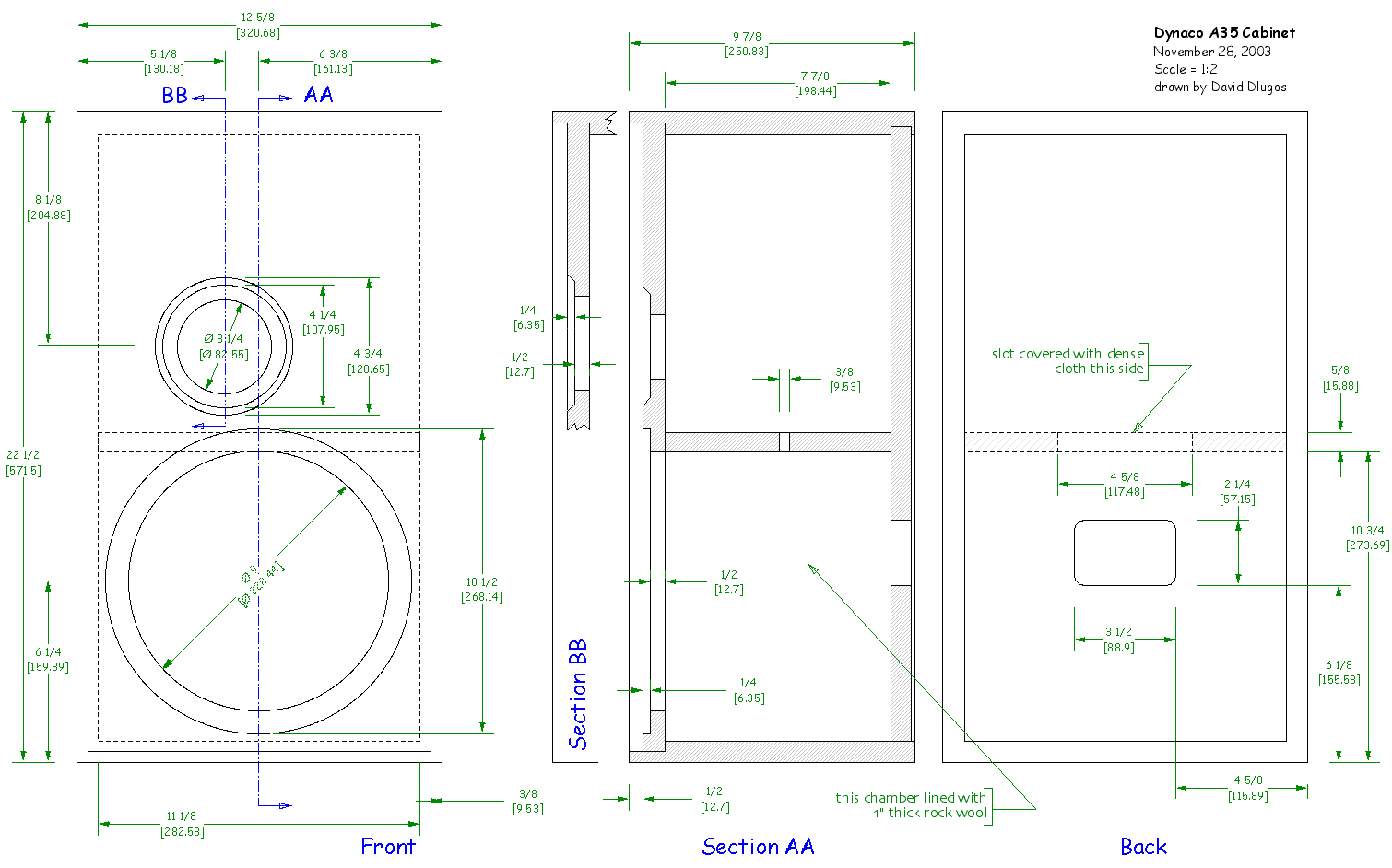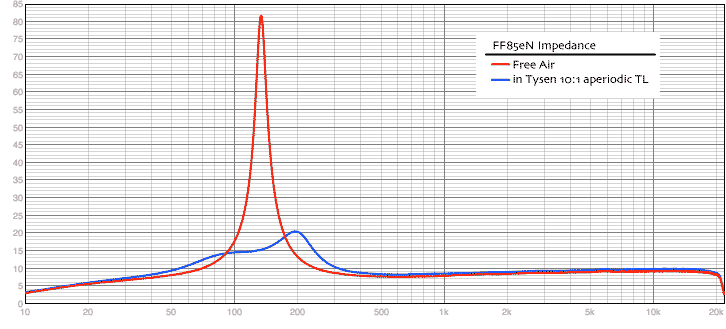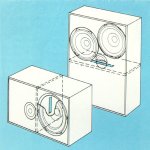Hi all,
Just found this place! Looking forward to annoying everyone with, hopefully not-to-stupid questions! 🙂 So far I've built Adire's Kit 281, 81's and did a few Tempest subs, currently a twin Tempest sealed.
So, first up....
I've seen this in the PE catalog and was wondering what they are used for?
Would these "help" a driver that "works best in a vented enclosure" if used in a sealed box?
Pete
Just found this place! Looking forward to annoying everyone with, hopefully not-to-stupid questions! 🙂 So far I've built Adire's Kit 281, 81's and did a few Tempest subs, currently a twin Tempest sealed.
So, first up....
I've seen this in the PE catalog and was wondering what they are used for?
Would these "help" a driver that "works best in a vented enclosure" if used in a sealed box?
Pete
That's basically what they're used for. They can often allow you to use a "sealed" design in a smaller than optimal enclosure. They can also be found under a few other names, such as the "Variovent". Personally I haven't used them, although I've heard of people using them successfully.
Do the vents output sound?
What are the tradeoffs in using a driver that is supposed to be used in a vented alignment, and putting it in a sealed enclosure? For that matter, what makes a driver more suitable to one alignment over another?
Pete
What are the tradeoffs in using a driver that is supposed to be used in a vented alignment, and putting it in a sealed enclosure? For that matter, what makes a driver more suitable to one alignment over another?
Pete
I have been thinking about an enclosure that is divided by an internal wall. There are two chambers: The small chamber is the primary chamber, where the speaker driver is located. Between these two chambers is an otherwise airtight wall, but there is a hole and an aperiodic vent installed to it. The bigger chamber is much bigger than the small chamber. Probably the big chamber would be so big that increasing its volume would not practically change anything. The small chamber is very small, just like aperiodic speakers usually are.
Unlike traditional aperiodic speakers, this one does not leak outside. We may consider it as an extremely damped closed box, because that is how it appears from outside: no vents. Also the big chamber may be stuffed with steel wool, angel hair, cotton strips, or any other favorite damping material, to further enhance damping. The smaller chamber may be also stuffed, but probably not using steel wool.
Unlike traditional aperiodic speakers, this one does not leak outside. We may consider it as an extremely damped closed box, because that is how it appears from outside: no vents. Also the big chamber may be stuffed with steel wool, angel hair, cotton strips, or any other favorite damping material, to further enhance damping. The smaller chamber may be also stuffed, but probably not using steel wool.
Your idea is similar to figure 1 in this patent US2065751A - Acoustic resistance device
- Google Patents
Although there, the secondary chamber is smaller than the primary chamber.
- Google Patents
Although there, the secondary chamber is smaller than the primary chamber.
An internally-vented aperiodic vent, 2 chamber, design, was used successfully in the Dynaco speakers A35, A40XL and A50 speakers.
I have A40XL speakers and the internal vent is a relatively small rectangular slot with dense fabric over the slot.
I have A40XL speakers and the internal vent is a relatively small rectangular slot with dense fabric over the slot.
Proven concept, I see
Yes, that is what I was thinking about. Exact chamber dimensions are not that essential.
Mr. Scheldorf got it already in 1935.
It is good to know that some speaker manufacturers produced aperiodic speakers that way.
Your idea is similar to figure 1 in this patent US2065751A - Acoustic resistance device
- Google Patents
Although there, the secondary chamber is smaller than the primary chamber.
Yes, that is what I was thinking about. Exact chamber dimensions are not that essential.
Mr. Scheldorf got it already in 1935.
An internally-vented aperiodic vent, 2 chamber, design, was used successfully in the Dynaco speakers A35, A40XL and A50 speakers.
I have A40XL speakers and the internal vent is a relatively small rectangular slot with dense fabric over the slot.
It is good to know that some speaker manufacturers produced aperiodic speakers that way.
the Dynaco speakers A35, A40XL and A50 speakers..

NAIM also did some speakers like you describe.
dave
As in the internal resistive vent? The basic idea is that the driver 'sees' a small volume at higher frequencies a la an acoustic suspension, but as wavelengths increase the vent becomes increasingly transparent and the whole box volume is used, in some cases with a better damped impedance peak than would typically be the case. It also avoids the ultimate unloading that a regular resistive vent to the room has. Usually the latter isn't an issue, but technically it does happen at some point.
I read it so long ago, i cannot remember enuff to say. It sorta made sense to me, but with careful design one gets near zero output from an aperiodic terminus, so it has the entire room as the 2nd chamber.
I was introduced to aperiodic early on by a fellow who built many of the Radford S90 boxes in Calgary. He probably did as much reseach on the subject as Jordan did decades earlier at Goodmans. I have built quite a few aperiodic boxes trying many of the different techniques.
dave
I was introduced to aperiodic early on by a fellow who built many of the Radford S90 boxes in Calgary. He probably did as much reseach on the subject as Jordan did decades earlier at Goodmans. I have built quite a few aperiodic boxes trying many of the different techniques.
dave
BTW i have a couple experimental ScanSpeak style vents i will neve ruse if someone wants them (and i can find them).
dave
dave
i do not see the point either
See post 11. That was about as much of a point as it has. At higher frequencies the driver notionally has the smaller volume's air load, at lower frequencies the entire box Vb comes into play, with (in some cases) it being hoped a better damped impedance than might otherwise be the case. If in a tower form factor, it also by nature helped break up longitudinal eigenmodes, although you can address these via other means of course. Makes life harder than it really needs to be in my view, but no real harm in it either.
What is the point, what does one gain?
The gain ... is the aperiodic enclosure. Then you may ask how is that some kind of gain?
You wish less distortion from electrodynamic speakers, then you would want to drive the speaker according to its physical principle: Give it a fine current signal and you get a fine sound. Except the resonance. Cure the resonance and heal the speaker, then you may use the current-drive and not get irritated by boomy resonance. So there is the gain.
Ok, there may be even better ways than an aperiodic vent to achieve an aperiodic speaker enclosure, but the aperiodic vent is obviously one possible solution.
what is gained by using aperiodic vent like this?
The gain ... is the aperiodic enclosure. Then you may ask how is that some kind of gain?
You wish less distortion from electrodynamic speakers, then you would want to drive the speaker according to its physical principle: Give it a fine current signal and you get a fine sound. Except the resonance. Cure the resonance and heal the speaker, then you may use the current-drive and not get irritated by boomy resonance. So there is the gain.
Ok, there may be even better ways than an aperiodic vent to achieve an aperiodic speaker enclosure, but the aperiodic vent is obviously one possible solution.
Last edited:
Here is an example midTL impedance. The same can be done with full-size TLs using heavy damping.

A 10:1 tapered TL 18 cm long
dave
A 10:1 tapered TL 18 cm long
dave
See post 11. That was about as much of a point as it has. At higher frequencies the driver notionally has the smaller volume's air load, at lower frequencies the entire box Vb comes into play, with (in some cases) it being hoped a better damped impedance than might otherwise be the case. If in a tower form factor, it also by nature helped break up longitudinal eigenmodes, although you can address these via other means of course. Makes life harder than it really needs to be in my view, but no real harm in it either.
thank you! there may be advantages that i do not see now, but i just can not see any win over using a single large compartment box. aperiodic i see advantage, i use it sometimes when i plug my ports with dacron filling, there is a huge difference in impedance peak this way over an airtight plug
The gain ... is the aperiodic enclosure. Then you may ask how is that some kind of gain?
You wish less distortion from electrodynamic speakers, then you would want to drive the speaker according to its physical principle: Give it a fine current signal and you get a fine sound. Except the resonance. Cure the resonance and heal the speaker, then you may use the current-drive and not get irritated by boomy resonance. So there is the gain.
Ok, there may be even better ways than an aperiodic vent to achieve an aperiodic speaker enclosure, but the aperiodic vent is obviously one possible solution.
i think i get the aperiodic vent, just not why one wants a two compartment box with aperiodic vent between them
- Home
- Loudspeakers
- Multi-Way
- Scan-Speak Aperiodic Vent?
